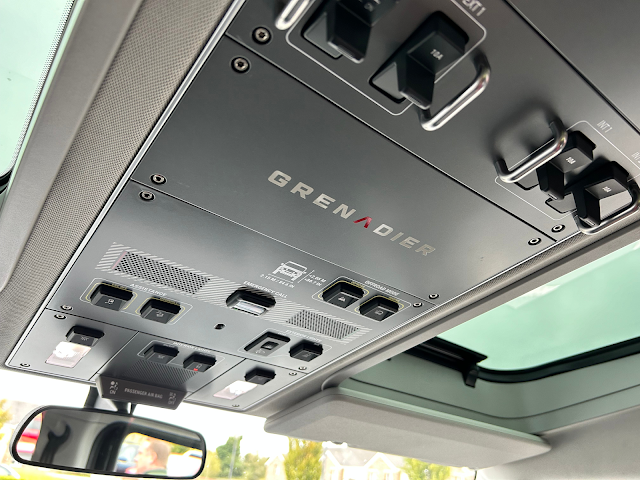When Land Rover finally put the long-serving original Defender out to grass in the Valhalla of automotive legends, they demised their brand’s uncompromising rugged looks, writes Brian Byrne. They also said goodbye to a plain box shape that had remained close to the original Land Rover of the post WW2 period. And they pushed one of the most uncomfortable cars of all time into the ditch. All of that, strangely, left a vacuum. And nature abhors such things, so it was inevitable that attempts would be made to fill it. Is the Ineos Grenadier the vehicle to do that job?
The what? Yep. Well, a lack of knowledge about Ineos is understandable, even if it is the fourth largest chemicals company in the world, headquartered in London and founded by British entrepreneur and financier Sir Jim Ratcliffe. Revenues of €61 billion from a range of petrochemicals and plastics operations mean deep pockets. So when the owner decided to build a ‘spiritual successor’ to the Defender, he had the wherewithal. The Grenadier is the result. First announced in 2017, it’s now a production vehicle with rugged visual impact and, by all accounts, an enviable ability in tough environments. We have so far driven it briefly, and only on road, so we’ll wait for a further opportunity to put it through its full paces.
Visually it has elements of Tonka trucks that once were an essential part of a young boy’s toys chest. What looks like exaggerated detail is in fact a reflection of design that arguably includes over-engineering to the nth degree. A tilt to the Land Rover are the exposed door hinges. The car's square shape, edges, massive grille and a front bumper extraordinarily like those put on Volvos in the 1970s in response to US-mandated crash requirements all combine to make this the ultimate anti-subtle vehicle on the road. Round headlights in these days of thin and raptor bird eye shapes also hark back to the Defender. Inbuilt mountings on the doors are for 'utilities', such as spare fuel jerrycans as some South Africa customers have optioned.
The interior is equally dramatic, with a similar perceived solid build as the exterior. But viewed against my own experiences of original Defenders and their earlier iterations, the Grenadier's finish and fittings are very much 21st century comfort. A centre stack is so massive that the infotainment screen on top seems quite small, and that space is shared with the driving information of speed and revs and fuel and engine temperature status. I go on about the need to go back to physical buttons and switches, and the Grenadier has all of these. All, and big. Very big. And more of them in the roof, between two skylight roof panels. It all feels very 1947 DC3 Dakota airplane cockpit, though when you look at the switchgear labels, they are simply the standard controls we have in most cars plus a couple of off-road related ones. The automatic transmission shifter is an immediate giveaway that the powertrain underpinnings are BMW.
It's very spacious and leather-style comfort in the Grenadier, and the rear seats are big enough for three full-size adults along with their required elbow room. Head space is enough that occupants could wear crash helmets if the journey is bucketing across the Baja or smashing through Sahara sand. The structure of the Grenadier is traditional 'real' SUV ladder on frame, and the coil springs and beam axles are also designed for extreme rugged use. A 3.5-tonne tow rating and 5.5-tonne winching ability are geared to safari-level travelling.
The engine options are petrol or diesel 3.0 BMW 6-cylinder inlines, with an 8-speed autobox. AWD is permanent and there's a full low-range transfer case and a differential lock. On my introductory drive, the quirky non-self-centering steering took a bit of getting used to. Supposed to be better for offroad, which is something I'd never heard of before.
The Grenadier is available in Ireland from a company called Orangeworks Automotive, based at Carton House in Kildare or Orangeworksautomotive.com. There are 2- and 5-passenger commercial-rated versions and a non-commercial 5-passenger. More about the car when I get some longer-term driving in it.
PRICE: Commercials from €64,000+VAT; passenger vehicle from €138,000. WHAT I LIKED: Over-the-top, because they can.




